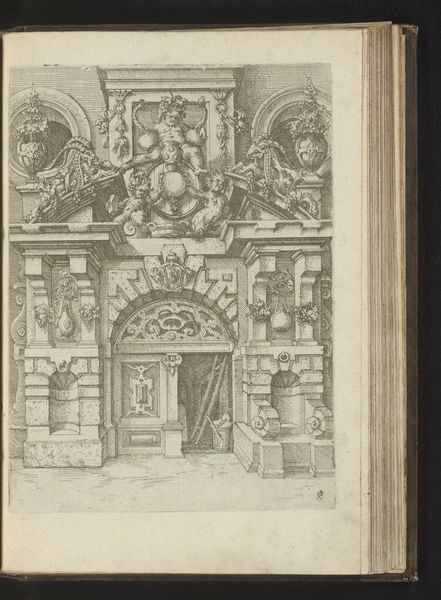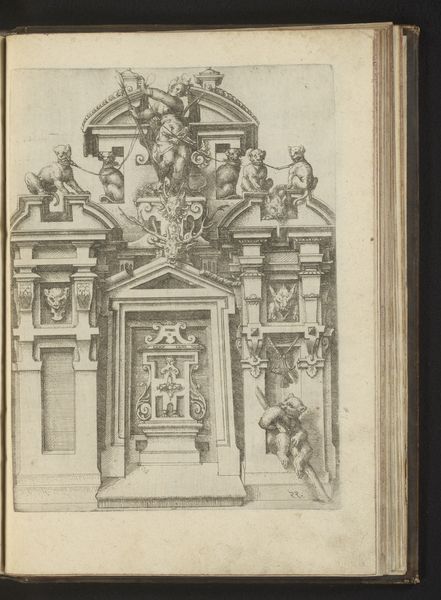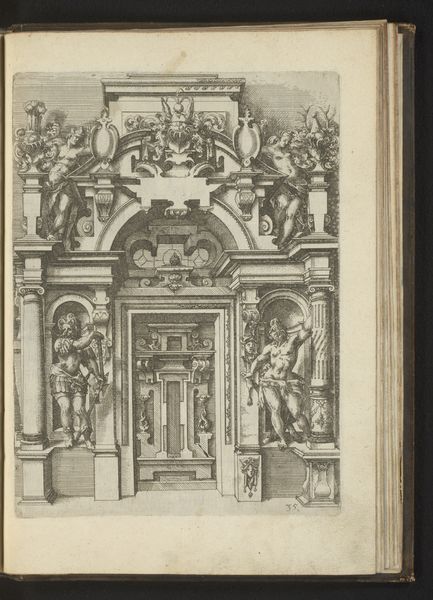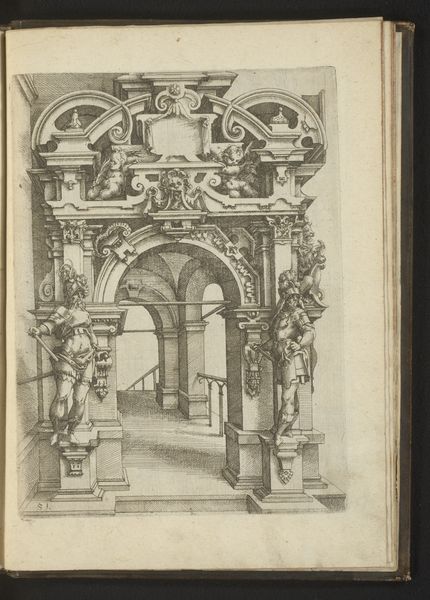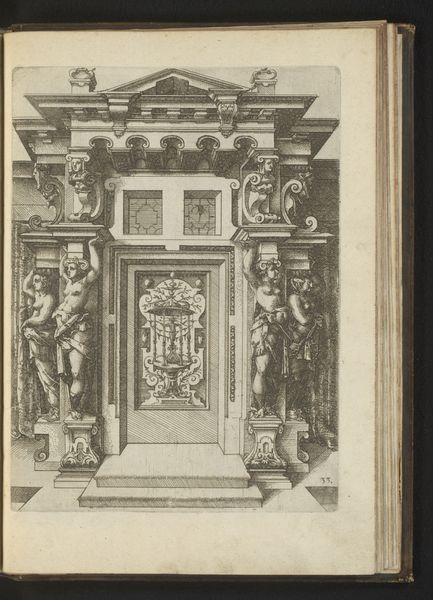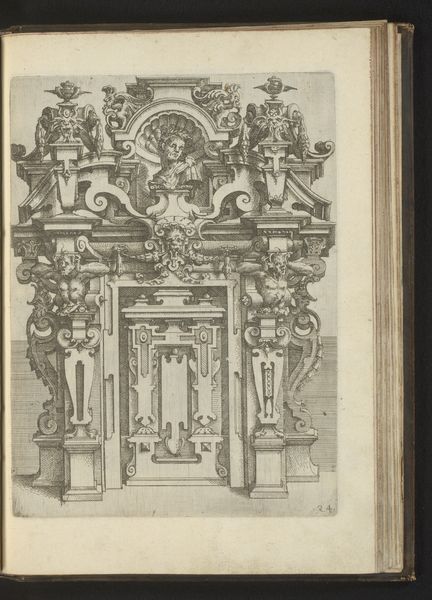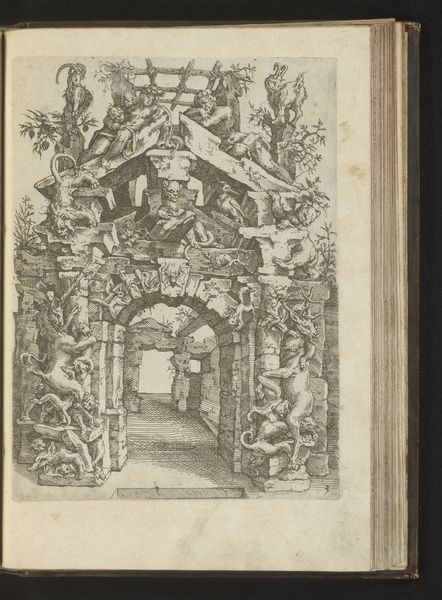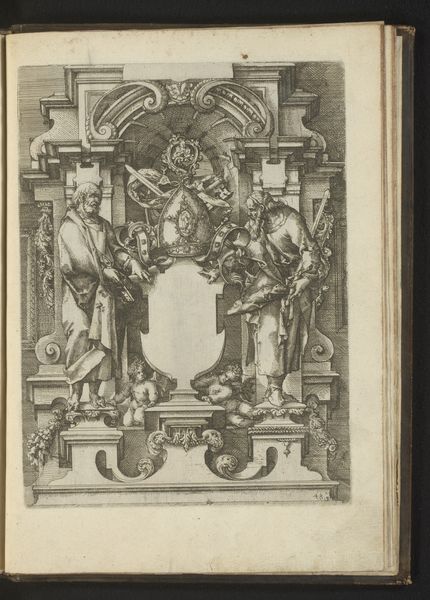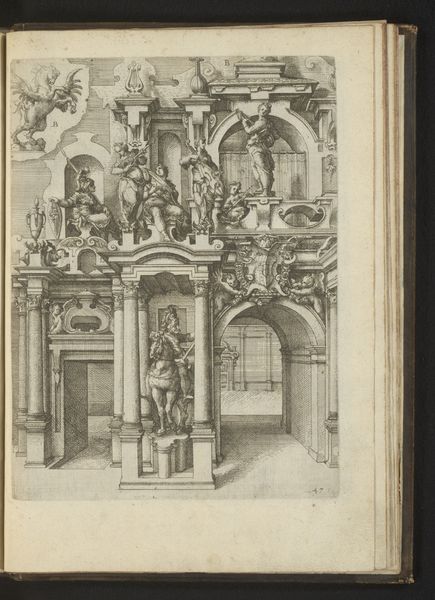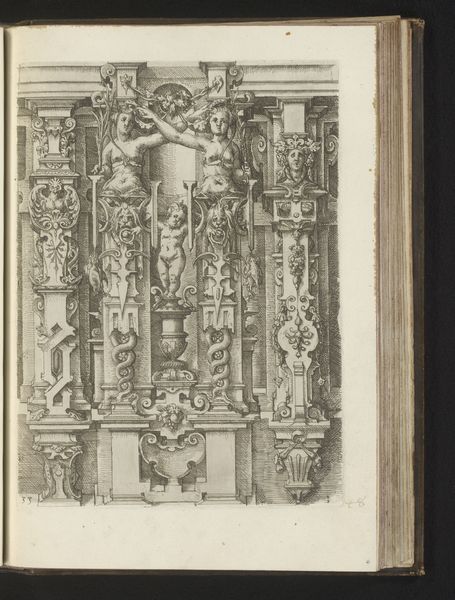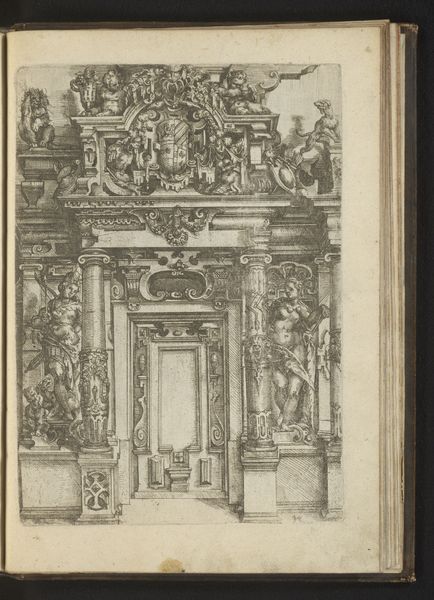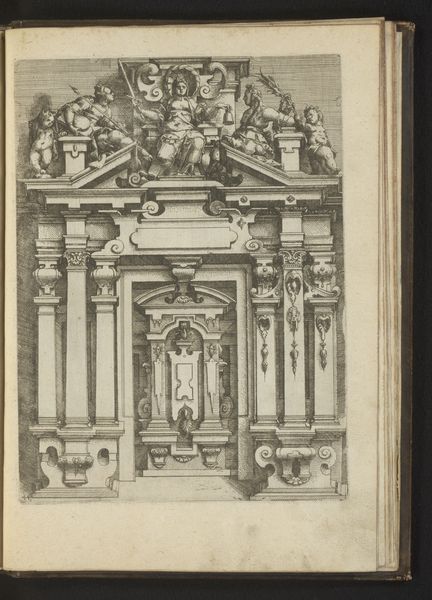
Portaal van hout met dennenappels, vogels en takken en binnen ligt een man 1593 - 1595
0:00
0:00
drawing, print, engraving, architecture
#
drawing
# print
#
mannerism
#
figuration
#
line
#
history-painting
#
northern-renaissance
#
engraving
#
architecture
Dimensions: height 247 mm, width 185 mm
Copyright: Rijks Museum: Open Domain
Wendel Dietterlin created this woodcut titled "Portal of wood with pine cones, birds and branches and inside lies a man" around the late 16th century. This portal immediately presents conflicting meanings. On one hand, the portal’s decorative elements—pine cones, birds, branches—suggest an idealized vision of nature and a sense of harmony. On the other hand, a man lies within the structure, and the ladder suggests an escape. This reminds us of the socio-political context of Dietterlin's time, a period marked by increasing urbanization and social inequalities. Produced in Germany, the print reflects the cultural values of the time, with the portal perhaps representing the established order and the man representing the marginalized. The use of the woodcut technique further emphasizes the contrast between the natural and the artificial, as the medium itself is derived from nature but used to create structured forms. Analyzing these clues, and referring to historical documents, can help us to understand the complex relationship between art and society, and how artists respond to the social conditions of their time.
Comments
No comments
Be the first to comment and join the conversation on the ultimate creative platform.
